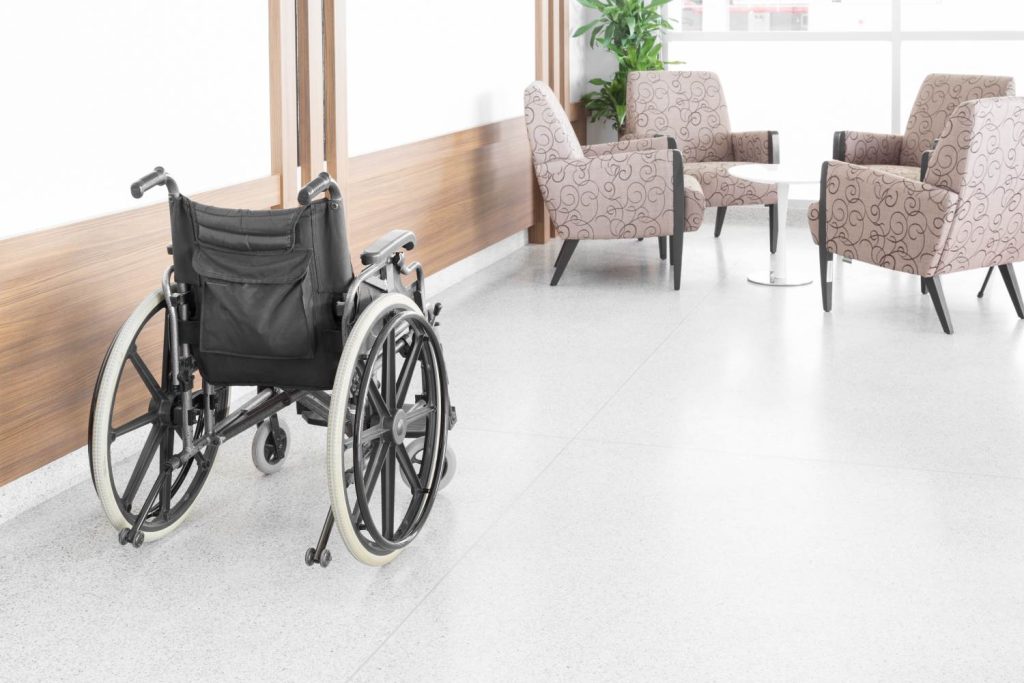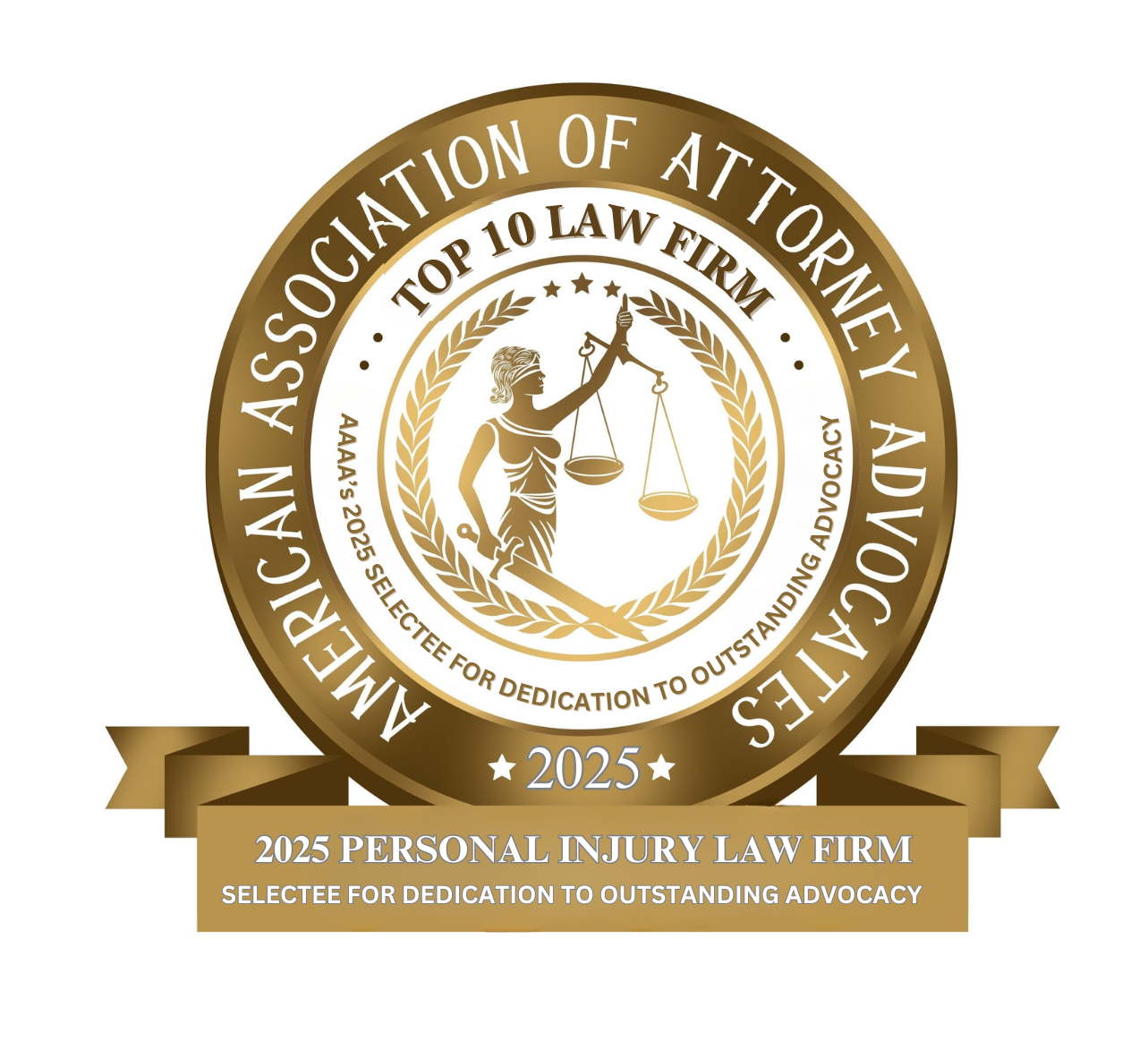Lacerations and Cuts in Illinois Nursing Homes
Illinois Nursing Home Neglect Attorneys For Residents Who Suffer Severe Cuts

Lacerations in nursing homes are serious injuries that can occur due to neglect, improper supervision, or unsafe conditions. These deep cuts or tears in the skin are more than just painful wounds. For elderly residents with fragile skin or compromised health, lacerations can lead to infections, delayed healing, and other severe complications. At John J. Malm & Associates, we know how upsetting it can be when a loved one suffers a serious injury in a nursing home. Lacerations, which are deep cuts or tears in the skin, are more than painful wounds. They can indicate neglect, unsafe conditions, or inadequate supervision. Elderly residents are particularly vulnerable due to fragile skin, underlying health issues, and slower healing, making these injuries potentially life-threatening.
“Lacerations are often a clear indicator of neglect in nursing homes, and they can lead to severe complications if not treated promptly. At John J. Malm & Associates, our firm is committed to holding nursing homes accountable for their failure to protect residents from these preventable injuries.” — John J. Malm, Naperville nursing home abuse attorney
Understanding Lacerations and Their Dangers to Nursing Home Residents
A laceration is a deep cut or tear in the skin, often caused by a sharp object or forceful impact. In nursing homes, lacerations commonly occur as a result of falls, mishandling by caregivers, or unsafe environments. Lacerations are particularly concerning for elderly residents because their skin is more fragile, and they may have underlying conditions that slow the healing process. Some common causes of lacerations in nursing homes include:
- Falls: One of the most frequent causes of lacerations in nursing homes is a fall. When residents trip, slip, or fall, they can sustain deep cuts or tears from hitting sharp or hard surfaces.
- Poor Handling by Caregivers: Improper lifting techniques or rough handling during transfers can cause lacerations, especially if the resident’s skin is already fragile or prone to injury.
- Unsafe Environment: Sharp objects, broken furniture, or other hazards in the nursing home environment can easily cause lacerations if residents come into contact with them.
- Mobility Equipment: Wheelchairs, walkers, and other mobility aids can cause cuts if not used correctly or if the equipment is faulty or improperly maintained.
- Self-Harm or Resident-on-Resident Incidents: In rare cases, lacerations may result from self-harm or violent altercations between residents, especially if the facility fails to provide proper supervision.
Lacerations in nursing homes require immediate medical attention. Without prompt and proper care, these wounds can become infected, leading to serious complications that may require hospitalization or surgery.
Risk Factors That Increase the Likelihood of Lacerations
Several factors make elderly residents more vulnerable to lacerations, and nursing homes must take special precautions to prevent these injuries. Common risk factors include:
- Fragile Skin: As people age, their skin becomes thinner and more fragile, making it more susceptible to tears and lacerations from even minor trauma.
- Immobility: Residents who have difficulty moving or are bedridden are more likely to suffer injuries when they attempt to get up or move without assistance.
- Cognitive Impairments: Residents with dementia or Alzheimer’s disease may be more likely to fall or injure themselves because they are unaware of their surroundings or do not recognize potential hazards.
- Use of Blood Thinners: Many elderly residents are prescribed blood-thinning medications, which can cause even minor lacerations to bleed excessively, complicating the healing process.
- Lack of Supervision: Inadequate staffing or failure to properly supervise residents can increase the likelihood of falls and other accidents that lead to lacerations.
If you or your family notice any of these risk factors, it is important to ensure that nursing home staff are taking the necessary precautions to prevent lacerations and other injuries.
Health Consequences of Lacerations on Nursing Home Residents
Lacerations may seem like minor injuries, but for nursing home residents, they can lead to significant health complications and long-term consequences. Some of the common impacts of lacerations in nursing home residents include:
- Infections: Lacerations that are not cleaned and treated properly can become infected, leading to serious conditions like cellulitis, abscesses, or sepsis. For elderly residents, infections can be particularly dangerous and may require hospitalization or intravenous antibiotics.
- Delayed Healing: Elderly residents often have slower healing times due to age, poor circulation, or underlying health conditions such as diabetes. This can increase the risk of complications and prolong recovery.
- Chronic Pain: Even after a laceration heals, residents may be left with lasting pain, discomfort, or sensitivity in the injured area.
- Scarring and Disfigurement: Deep lacerations can leave permanent scars, which may cause emotional distress and affect a resident’s self-esteem.
- Loss of Mobility: If a laceration occurs on a joint or a weight-bearing part of the body, such as the legs or feet, it may limit the resident’s ability to move or walk, leading to further physical decline.
- Emotional Distress: Suffering a laceration, particularly as a result of a fall or other traumatic event, can cause emotional distress, anxiety, and a fear of falling again. This can lead to social withdrawal and a decline in the resident’s overall quality of life.
These complications underscore the importance of providing immediate and proper care for lacerations, as well as taking preventive measures to protect residents from injury in the first place.
Illinois Laws Protecting Nursing Home Residents
The Illinois Nursing Home Care Act establishes standards to protect residents from preventable injuries, including lacerations. Key provisions include:
- Adequate Supervision: Residents must receive proper monitoring to prevent falls and injuries.
- Safe Living Conditions: Facilities are required to remove hazards and maintain furniture and walkways.
- Personalized Fall Prevention Plans: High-risk residents must have tailored safety protocols.
- Proper Wound Care: Injuries must be promptly cleaned, dressed, and monitored for infection.
When facilities fail these obligations, families may pursue compensation for:
- Medical Expenses: Costs for treatment, hospitalization, and ongoing care.
- Pain and Suffering: Compensation for physical and emotional distress.
- Loss of Quality of Life: Damages for chronic pain, scarring, or reduced mobility.
At John J. Malm & Associates, our Illinois injury attorneys have successfully held negligent nursing homes accountable for lacerations and other injuries.
How John J. Malm & Associates Advocates for Victims of Lacerations in Illinois Nursing Homes
Proving negligence in a nursing home laceration case requires a thorough understanding of nursing home care standards, supervision protocols, and safety requirements. Our approach includes:
- Comprehensive Investigation: Collecting evidence such as medical records, staff reports, and inspection documents.
- Resident Advocacy: Ensuring that residents’ rights are protected and that facilities are held accountable.
- Legal Action: Filing lawsuits to recover damages when necessary.
- Settlement Negotiation: Securing fair compensation for pain, suffering, and ongoing care.
- Trial Representation: Presenting a compelling case in court if a settlement cannot be reached.
With offices in Naperville and St. Charles, we represent families across Illinois, standing up for residents’ rights and pursuing justice.
Immediate Steps to Take in Nursing Home Neglect Situations
If your loved one has suffered a severe cut in a nursing home and you believe it is due to neglect, it is important to take immediate action to protect their health and well-being. Follow these steps:
- Document the Injury: Keep all records of the laceration, including photographs of the injury, medical reports, and any complaints of pain or discomfort from the resident.
- Talk with the Nursing Home Management: Discuss your concerns about the laceration with the nursing home’s management team and make note of their response. Ensure that your loved one receives immediate medical attention and proper wound care.
- Report the Neglect: Contact the Illinois Department of Public Health (IDPH) to report the suspected neglect. The IDPH is responsible for investigating allegations of abuse and neglect in Illinois nursing homes.
- Contact an Experienced Illinois Nursing Home Abuse Attorney: Call John J. Malm & Associates for a free consultation. Our attorneys will investigate the case and pursue legal action.
Frequently Asked Questions about Nursing Home Cuts and Lacerations
Q: How soon should a laceration in a nursing home be treated?
A: Immediate attention is necessary to reduce infection risk and promote healing.
Q: Are nursing homes liable for lacerations caused by falls?
A: Yes, if the fall was due to unsafe conditions, poor supervision, or negligence.
Q: What compensation is available for residents with lacerations?
A: Compensation for medical expenses, pain and suffering, and loss of quality of life may be recoverable.
Q: What evidence helps prove negligence?
A: Photos of the injury, medical records, staff logs, incident reports, and inspection records can support a case.
Q: How long do nursing home injury cases take?
A: Some cases settle quickly, while complex cases may take months or longer if litigation is required.
John J. Malm & Associates: Pursuing Justice in Nursing Home Laceration Cases
At John J. Malm & Associates, we are committed to holding nursing homes accountable for the injuries they cause due to neglect, including preventable injuries like cuts and lacerations. Families have the right to pursue justice when facilities fail to provide safe, proper care.
If you or a loved one has suffered a laceration in an Illinois nursing home, don’t wait to take action. Contact the trusted Illinois nursing home abuse attorneys at John J. Malm & Associates for a free consultation. With offices conveniently located in Naperville and St. Charles, we are here to help families throughout Illinois. We will investigate the incident, advocate for your loved one, and pursue the compensation your family deserves.















